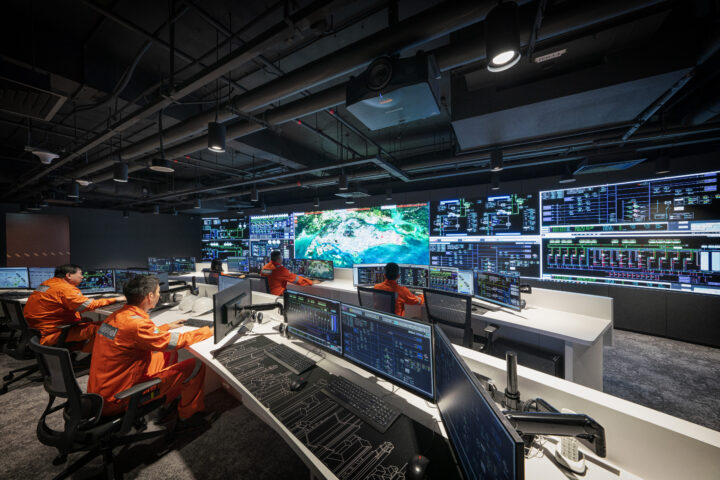People counters, foot traffic monitoring and associated technology have been around for many years. From basic counts to a detailed breakdown of in-store activity, there are many options out there, and many ways to enhance your understanding of what's happening inside your retail store.
If you're not currently monitoring store activity, then you're missing out on valuable data that can drive your strategic decision making. Even if you have implemented some kind of people counting technology, if you haven't reviewed your implementation for a few years, then it's likely that it's time for a technology refresh.
In this article, we look at the different foot traffic and people counting solutions out there in the market, as well as their strengths and weaknesses.
1. Beam Sensors
The earliest iterations of people counters were fairly rudimentary. A beam type sensor provides a basic count of people entering and leaving the store. Typically powered by a horizontal infrared beam across the store entrance, these systems count up every time the beam is broken. Divide the day's total number by two (to account for people entering and exiting the store) and you get a count of how many people came in that day, in theory at least.
In reality, these types of sensors were not hugely accurate. For one, they can't distinguish between multiple people entering the store at the same time, and they also may count objects, such as a pram or a shopping trolley, when those items cross through the beam.
As well as accuracy issues, these simple counters also don't provide any kind of intelligence. All you get is a simple count of people. They don't tell you anything about what those people do when they're inside the store.
2. Thermal Imaging
Thermal counters were the next iteration. These systems use thermal sensors that detect heat sources, and are typically mounted on the ceiling of the store.
While thermal imaging sensors can provide a more detailed view of the store than a basic beam counter, they are also plagued by accuracy issues. In addition, these systems don't do a good job of measuring people when the dwell time is more than a few seconds. They can also be expensive, as the bulbs used in the sensors have a short life and need to be frequently replaced, and the devices need to be placed all over the store in order to generate enough coverage of the store to produce detailed heat map type data.
3. Wifi Counting
A more recent development is to monitor shoppers via the proxy of their mobile devices, typically using a sensor that detects when those devices are sending out wifi probe requests as they pass through the store.
This approach is much more accurate than older technologies, but is not without its own challenges.
For one, clearly these systems can only detect and count shoppers if they have their phones with them. While smart phone penetration is ever increasing, some customers may not have brought their phones with them to your store (on the other hand, some customers may have multiple devices).
Wifi tracking also doesn't do a great job of detecting exactly where your customers go inside the store. While some triangulation of signal strength can be done to give a rough idea of the customer's movements, this is not hugely accurate.
One unique benefit of wifi counting over other approaches is that these systems can typically be configured to exclude staff member devices from the counts, something that is not possible with beam sensors or thermal imaging. They can also potentially identify repeat visits by the same individual customer, by recording the unique identifier from that customer's device (known as the MAC address). However, this is becoming harder to do as more and more smartphone operating systems implement MAC address randomisation. This means the device sends out a random device identifier instead of the real address when looking for and connecting to wifi; this feature circumvents any attempt to track the returning customer via a wifi counter, as it will use a different ID when the customer returns to the store.
Attempting to identify (or re-identify) individual customers via their devices also opens a can of worms from a privacy perspective. The data collected from wifi tracking could potentially be considered personal data, especially if it can be linked back to other sources of data you may have about that customer. Any retailer looking to implement wifi people counters needs to very carefully assess the privacy implications against the relevant legislation. Remember that it is not necessarily just your local legislation that you need to adhere to. In some circumstances, privacy legislation such as the EU's GDRP can apply extraterritorially. In other words, even if you are located outside the EU, you may need to respect the GDRP if EU citizens enter your store.
4. Camera People Counters and Video Analytics
Camera-based people counting (which is the technology behind WingArc Retail Analytics) uses cameras in the store to detect people with a high level of accuracy. Some systems require additional, dedicated, camera sensors to be installed, but these typically provide limited coverage of the store, as the cameras themselves have a limited range.
The WingArc retail solution avoids this problem by taking advantage of the cameras that are already in your store by using the feed from the existing security system and running a video analytics algorithm over the images to determine in-store activity. As these cameras typically already cover the entire store, this provides a really detailed picture of store activity, and allows the system to generate detailed heat maps showing customer movements as well as high and low traffic areas at different times of the day.
Video analytics also avoids the privacy implications of wifi counting systems, as the information collected is anonymised, and because there's no link to any tracking of a customer before they entered the store, or any attempt to reidentify the same customer on repeat visits. Video analytics solutions simply provide a highly accurate and effective count of footfall, in-store activity, and dwell time. Systems like the WingArc solution can also integrate with point of sale and other business data to calculate conversion rates, basket sizes and other key information to drive informed decision making.
Want To Know More?
Explore WingArc Retail Analytics to understand how our analytics platform and advanced heat mapping technology can help you understand your customers, reduce costs, and measure your marketing.



